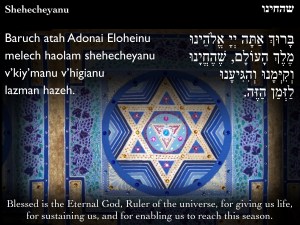This July Mars was closer than it’s been to Earth in fifteen years. With giddiness and wonder many of us took a glance at the night sky to see a hazy orange glow that indeed felt far more visible than usual.
In truth, Mars is always roughly the same distance from the earth, 38 million miles give or take a few. Sometimes, however, as happened this summer, our vantage point changes and we see our neighboring planet anew, as if now immediately by our side. Rather than have our heads buried in phones and screens of every ilk, we saw in a new light what otherwise seemed so taken-for-granted. The scientific community used the opportunity to present new findings on the epic volcano, Olympus Mons, the largest in our solar system, which rests atop Mars, as well as a winding lake, long dry, stretching twelve miles across a portion of the red planet.
All of it becomes a reminder that we need to look up sometimes too. We need to be reminded to turn our gaze elsewhere, away from Facebook and meeting agendas, lengthy emails and service outlines. Elul pulls us back, and turns our gaze to what matters, even as we feel the stifling pull of planning for our holy day season. Rather than get drawn to the stark glare of logistics and minutiae, let alone a news cycle that can be so unnerving, Elul brings our attention to those places we often neglect. During this sacred month, we turn to the full breadth of our faith, community, our Homeland and our God. As the tangible world competes for attention and commercials blare of sales and upcoming TV premiers, it is Elul that pulls our heart back to what is most fundamental.
As one of the harrowing Haftarah readings of this time of year urges: ‘Look up all around you and see; they are all assembled, are come to you’ (Isaiah 49:18).
As we turn ourselves now to our most central and sacred texts and prepare for the upcoming hagim, we see it all as if anew, against the backdrop of our scary world and the multiple generations within our communities that are in search of perspective and guidance for today. Like a planet that has always been there, but somehow feels brand new, we stand now to come back to the familiar hues and tones of Slichot, the Binding of Isaac, Tashlich, and of course Jonah. Like Mars, these narratives feel both mysterious and familiar. They are both right beside us and as distant as ever. We squint to see them with clarity and marvel at how many have looked at them over the centuries.
Our task becomes turning them round and round so that our collective vantage point has us see them for what they are: inspiring, beautiful, and offering us the wisdom we so very much need.
—
Rabbi Benjamin David serves Adath Emanu-El in Mt Laurel, New Jersey and is a co-founder of the Running Rabbis. Rabbi David is also the Editor of CCAR Press’s Seven Days, Many Voices: Insights into the Biblical Story of Creation.







 During the second and third year’s planning meetings, I fretted that many of those booklets had not returned to us. I was concerned about the potential chilul of where those booklets might have ended up and about the environmental waste of resources that would not be re-used and possibly not recycled. I wanted to revise some of the language we had chosen, but didn’t want to get rid of all the books we still had on hand. Some time between the third and fifth year I encountered
During the second and third year’s planning meetings, I fretted that many of those booklets had not returned to us. I was concerned about the potential chilul of where those booklets might have ended up and about the environmental waste of resources that would not be re-used and possibly not recycled. I wanted to revise some of the language we had chosen, but didn’t want to get rid of all the books we still had on hand. Some time between the third and fifth year I encountered 





